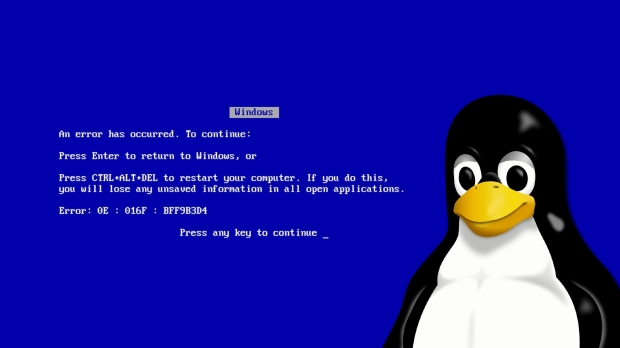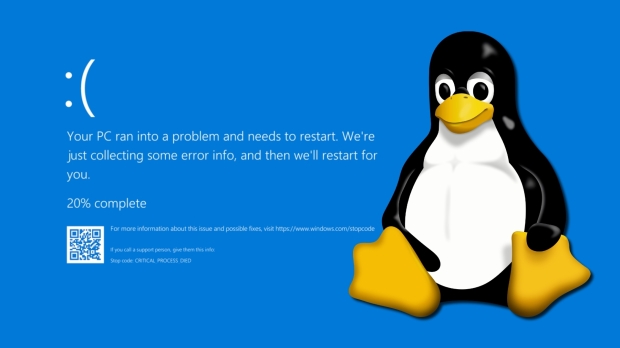Earlier this year, Linux hit its highest market share in decades, and even though that meant only 3% of PCs were rocking the open-source operating system, it was still something to celebrate for Team Penguin. Linux will probably never reach the same height as Microsoft Windows or even Apple's macOS (though it is more popular with PC gamers). Still, the long-standing OS will continue to receive updates and improvements for the foreseeable future.

One of these updates is a long-standing feature from Windows that is finally making its way to Linux, the Blue Screen of Death or BSOD. Windows users know all about the Blue Screen of Death, a full-screen error message that follows a full system crash requiring a complete reboot. With error codes and messages, it also doubles as a troubleshooting tool to figure out what's going on.
The Blue Screen of Death will work similarly in Linux, with the new system-BSOD component (currently listed as "experimental") generating an error message and QR Code when a Linux system crashes.
The update is available in Version 255 of Linux via the systemmd project on GitHub. This change should make its way into popular versions of the operating system like Ubuntu and Red Hat Enterprise Linux in 2024. Version 255 includes several other updates, which are detailed in the changelog.
With the Blue Screen of Death originating as a helpful diagnostic tool, it has become a symbol of Windows and PC unreliability over the years. And with Blue Screen error messaging coming to Linux, one can't help but wonder that the percentage of users getting BSOD errors will be fewer than those getting them with Windows.




